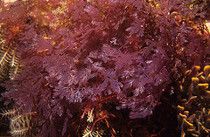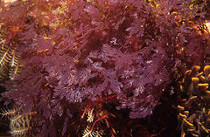Seaweed biofuel viable: good news for small island nations
A strain of yeast has been developed that allows red seaweed to be used as a biofuel, potentially aiding small island nations.

 A strain of yeast has been developed that allows red seaweed to be used as a biofuel, potentially aiding small island nations.
A strain of yeast has been developed that allows red seaweed to be used as a biofuel, potentially aiding small island nations.
Yong-Su Jin, Assistant Professor of Microbial Genomics and a faculty member in the Institute for Genomic Biology at the University of Illinois, made the identification with a team of colleagues.
The discovered strain has been found to make short work of fermenting galactose. "Making biofuels from red seaweed has been problematic because the process yields both glucose and galactose, and until now galactose fermentation has been very inefficient," said Jin.
"When Americans think about biofuel crops, they think of corn, miscanthus and switchgrass. In small island or peninsular nations, though, the natural, obvious choice is marine biomass," said Jin.
According to The Scottish Association for Marine Science, marine seaweeds and microalgae produce half the biomass on our planet but are largely unexploited for purposes of energy generation. Marine biomass has also been largely unexplored as a potential source of biofuels for transportation.
According to Jin, producers of biofuels made from terrestrial biomass crops have had difficulty breaking down recalcitrant fibers and extracting fermentable sugars. The harsh pretreatment processes used to release the sugars also resulted in toxic byproducts, hindering subsequent microbial fermentation, he said.
Marine biomass can be easily degraded to fermentable sugars, and production rates and distribution ranges are higher than terrestrial biomass. Jin states that galactose is one of the most abundant sugars in marine biomass so its improved fermentation will be of high importance for seaweed biofuel producers.
Jin and his team have recently identified three genes in saccharomyces cerevisiae, the microbe most often used to ferment the sugars. Their over expression increased galactose fermentation by 250 per cent compared to a control strain.
"This discovery greatly improves the economic viability of marine biofuels," said Jin.
Reasons why marine biomass is an attractive renewable energy source compared to terrestrial biomass include that production yields per unit are much higher, and the rate of CO2 fixation is much higher. This makes it an appealing option for sequestration and recycling of CO2, said Jin.
The development offers optimism with regard to the increased sustainable use of aquatic biofuels in the developing world. This can aid small islands and peninsulas to develop without being reliant on fossil fuels. It is anticipated that the technology and knowledge will offer environmental, economic and social sustainability in developing countries. Author: Marianna Keen | Climate Action Image: derekkeats | Flickr






